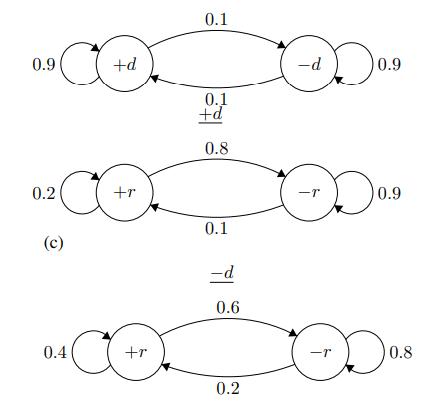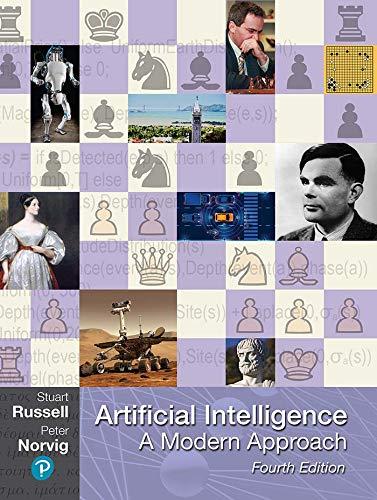In California, whether it rains or not from each day to the next forms a Markov chain
Question:
In California, whether it rains or not from each day to the next forms a Markov chain (note: this is a terrible model for real weather). However, sometimes California is in a drought and sometimes it is not. Whether California is in a drought from each day to the next itself forms a Markov chain, and the state of this Markov chain affects the transition probabilities in the rain-or-shine Markov chain. The state diagram for droughts, rain given drought, and rain given no drought appear in Figure S14.8.
a. Draw a dynamic Bayes net which encodes this behavior. Use variables Dt−1, Dt , Dt+1, Rt−1, Rt , and Rt+1. Assume that on a given day, it is determined whether or not there is a drought before it is determined whether or not it rains that day.
b. Draw the CPT for Dt in the above DBN. Fill in the actual numerical probabilities.
c. Draw the CPT for Rt in the above DBN. Fill in the actual numerical probabilities. Suppose we are observing the weather on a day-to-day basis, but we cannot directly observe whether California is in a drought or not. We want to predict whether or not it will rain on day t + 1 given observations of whether or not it rained on days 1 through t.
d. First, we need to determine whether California will be in a drought on day t+1. Derive a formula for P(Dt+1|r1:t) in terms of the given probabilities (the transition probabilities on the above state diagrams) and P(Dt |r1:t) (that is, you can assume we’ve already computed the probability there is a drought today given the weather over time).
e. Now derive a formula for P(Rt+1|r1:t) in terms of P(Dt+1|r1:t) and the given probabilities.
Figure S14.8

Step by Step Answer:

Artificial Intelligence A Modern Approach
ISBN: 9780134610993
4th Edition
Authors: Stuart Russell, Peter Norvig





